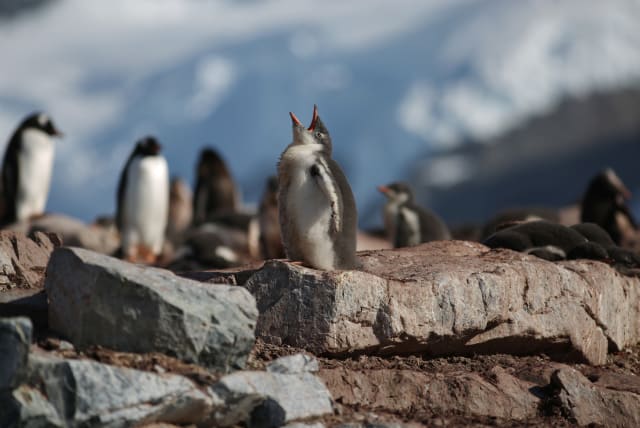Bird flu found on mainland Antarctica for first time ever

Scientists have warned that the impact of the bird flu on Antarctic wildlife could be "immense."
The H5 subtype of highly pathogenic avian influenza has been found on mainland Antarctica for the first time, Spain's Science Ministry announced on Sunday.
According to the ministry, the presence of the virus was confirmed on Saturday by scientists at the Severo Ochoa Molecular Biology Center, led by researcher Antonio Alcamí, who works at the Spanish Gabriel de Castilla Base on Deception Island in Antarctica.
The virus was found in samples from two dead skuas which were found by Argentine scientists near the Argentine Antarctic base Primavera, located on the Antarctic Peninsula south of Argentina.
"This discovery demonstrates for the first time that the highly pathogenic avian influenza virus has reached Antarctica despite the distance and natural barriers that separate it from other continents. This finding could also explain the bird deaths recorded during the Antarctic summer," said the Spanish Science Ministry.
The ministry added that the detection of the virus will "national polar programs to be prepared to avoid the transmission of the infection by human means and, above all, avoid infecting people."
Bird flu continues to spread in Antarctic region
In October, the first ever recorded case of bird flu in the Antarctic region was detected in brown skua birds on Bird Island, part of the British overseas territory of South Georgia and the South Sandwich Islands. The island is also claimed by Argentina as part of the Tierra del Fuego Province.
Just a few days later, the Falkland Islands reported their first case of bird flu as well. Since then, brown skua, kelp gulls, southern fulmars, black-browed albatrosses, grey-headed albatrosses, and southern elephant seals have been found or suspected to be infected with H5 avian influenza in the Antarctic region. In the Falkland Islands, dozens of gentoo penguins have been killed by the virus as well.
In a pre-print study in November, British scientists warned that "if the virus does start to cause mass mortality events across penguin colonies, it could signal one of the largest ecological disasters of modern times."
In December, OFFLU, a network of scientists from the UN Food and Agriculture Organization (FAO) and the World Organization for Animal Health (WOAH, founded as the OIE: Office International des Epizooties; OFFLU stands for "OIE/FAO network of expertise on avian inFLUenza") warned that bird flu is likely to spread further in Antarctica and could have an "immense" negative effect on wildlife in the region.
The scientists warned at the time that the virus could infect the 48 species of birds and 26 species of marine mammals that inhabit the Antarctic region.
"The negative impact of HPAI H5 on Antarctic wildlife could be immense, because their presence in dense colonies of up to thousands of pinnipeds (seals) and hundreds of thousands of birds facilitates virus transmission and may result in high mortality," wrote the scientists.
The scientists also warned that the virus could spread from the Antarctic region into Oceania, which has been largely spared from the global outbreak of H5N1 avian influenza that has swept Europe and the Americas in recent years.
Last week, the British Antarctic Survey announced that avian influenza had been detected in an albatross in South Georgia.
Since 2021, Europe and the Americas have been suffering from a nearly continuous outbreak of H5N1 avian influenza which has been described as "the largest-ever" on the three continents. The virus has affected tens of millions of birds and thousands of mammals worldwide. Outbreaks of the virus have also become more common in Africa and Asia in the past year.
Jerusalem Post Store
`; document.getElementById("linkPremium").innerHTML = cont; var divWithLink = document.getElementById("premium-link"); if (divWithLink !== null && divWithLink !== 'undefined') { divWithLink.style.border = "solid 1px #cb0f3e"; divWithLink.style.textAlign = "center"; divWithLink.style.marginBottom = "15px"; divWithLink.style.marginTop = "15px"; divWithLink.style.width = "100%"; divWithLink.style.backgroundColor = "#122952"; divWithLink.style.color = "#ffffff"; divWithLink.style.lineHeight = "1.5"; } } (function (v, i) { });

